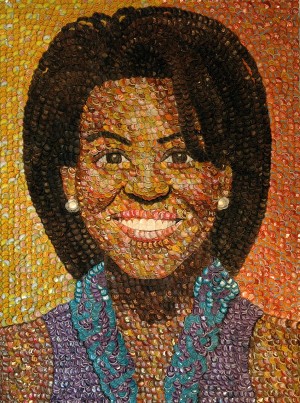Take Five: Molly Right’s Bottle Cap Portraits
During the summer of 1973, in Charleston, South Carolina, a 10-year-old Molly B. Right started scavenging bottle caps from the streets where she lived. One day, she set her sights on something bigger — the metal box attached to the corner store’s drink cooler used for garbage. Sure enough, jewel colored caps from bottles of Coke, Grape Nehi, Sprite and Pepsi spewed out of the box’s mouth like slot machine coins.
Thirty years later, this collection birthed Right’s bottle cap portraits. She began thinking about assortments and about hoarding. It started with a bright, neon sign hanging above a church that read “Jesus Saves.” A series took form, depicting a modern-day Christ, robed and bearded, by way of saving stamps and caps like Right’s 10-year-old self. From there, she graduated to portraits made of the caps themselves. These richly-detailed representations resemble heavily-pixelated images. Their depth and texture turns them into something greater, adding a certain vitality to the faces — they literally jump out at you.
As several of these portraits are born out of commissions, Right must interject her personality in other ways. Often, the people she portrays represent her own passions. She depicts the brave and the fearless, sculpting intrepid subjects as disparate as Michelle Obama and frontiersmen, from a quotidian material.
Right sat down with GALO to discuss this process and her aesthetic.
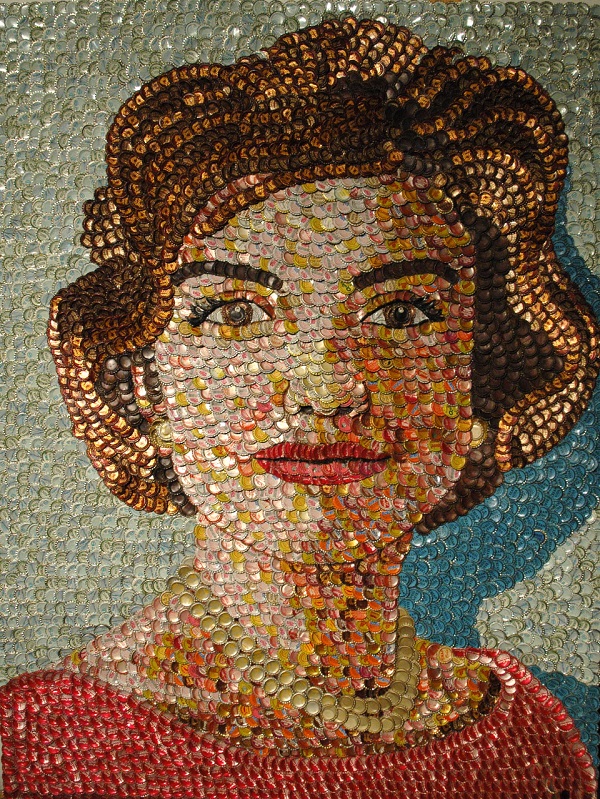
Jackie Kennedy by artist Molly Right. Photo Credit: Molly Right.
GALO: Where do you collect the bottle caps — do you enlist help from your friends and family or is this a project you complete by yourself? And do you buy them online or do you find them discarded?
Molly Right: Usually, I find them online and most of them are unused overstock. They’re generally old; some of them date back to the ’40s. It’s usually just stuff that people have found in a case in their basement or something. They’re the sort of thing that somebody filed away.
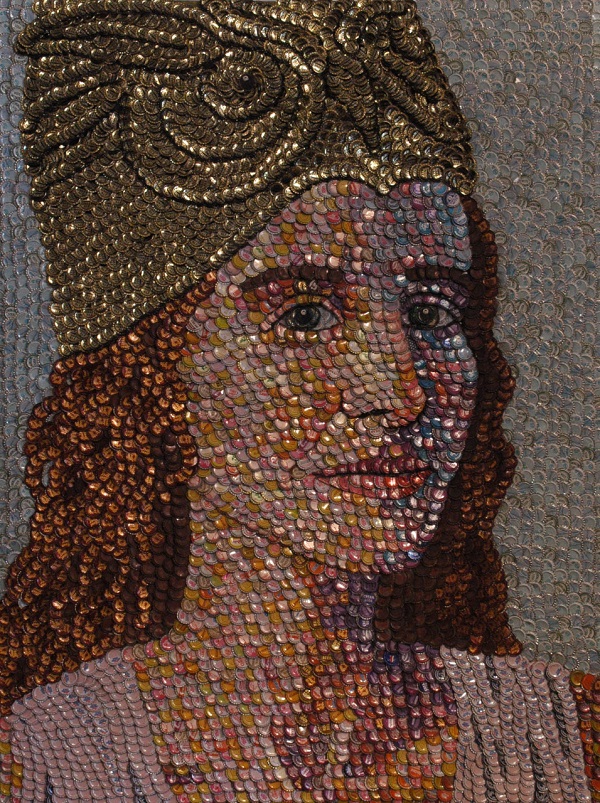
Minerva, Roman goddess of wisdom by artist Molly Right. Photo Credit: Molly Right.
GALO: Can you describe your process from conception to completion — do they take shape as you go or do you create an initial sketch to get you started? How do you choose who to portray in the portraits? Do you ever choose less recognizable subjects, like strangers, friends or family?
MR: Generally, most of my work now is commission. People find me through word of mouth after seeing a piece in somebody’s house, in magazines or on an HGTV show that sometimes gets rerun. They get in touch, and often, the client has an idea of their own. It can be anything. They will want to do something like Marilyn Monroe, or their children.
I start with a full-size, life-like painting and then place the bottle caps on top of the painting. The caps aren’t painted. The portraits’ color comes from the color of their logos.
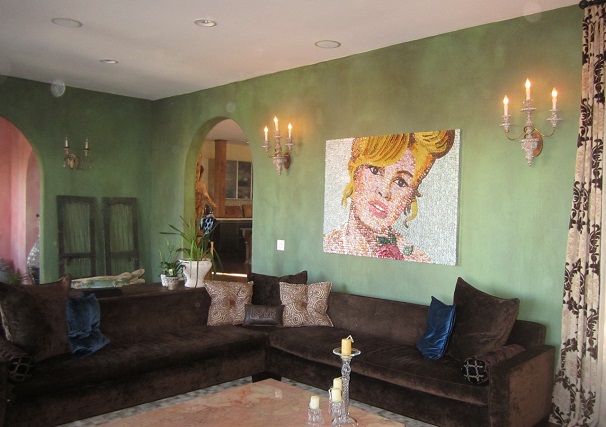
Brigette Bardot by artist Molly Right. Photo Credit: Molly Right.
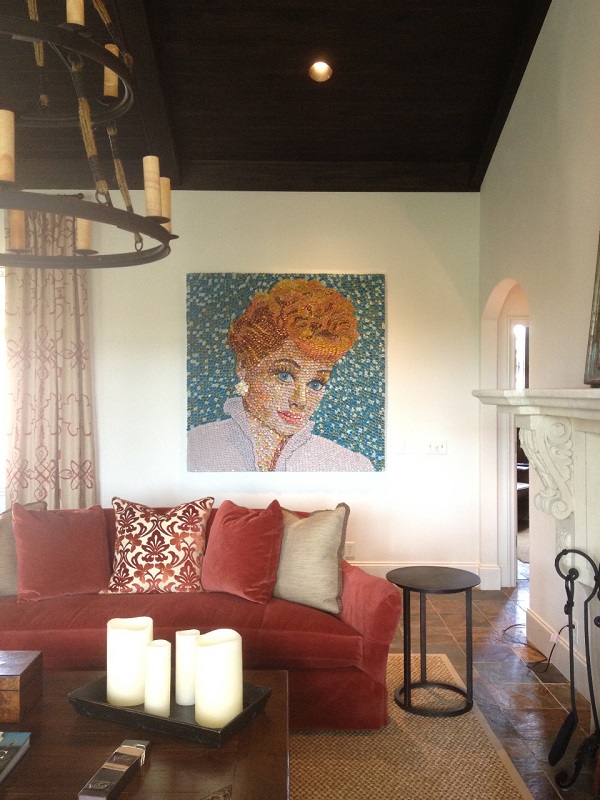
Lucy at the St. Simon’s Residence by artist Molly Right. Photo Credit: Molly Right.
GALO: Because these are portraits, the pieces are quite straightforward. But upon closer inspection, the viewer starts seeing the details of the bottle caps, while the particulars of the overarching subject fall away. Do these pieces then comment on the universality of individuals and their core makeup? Additionally, many of the bottle caps come from soft drinks that we consume every day — Mountain Dew, Root Beer, etc. Does this prosaic quality of the materials belie the uniqueness of each subject?
MR: I’ve never really thought about it in those terms. These pieces are more straightforward. I don’t interpret a lot of meaning from the bottle caps and how they relate to the subject, because, in a sense, it could be anything. It doesn’t have to be bottle caps — that’s just what I’ve focused on.
This is a niche that I’ve found. I’m just nostalgic about the bottle caps. I started collecting them as a child and that’s what’s appealing to me.
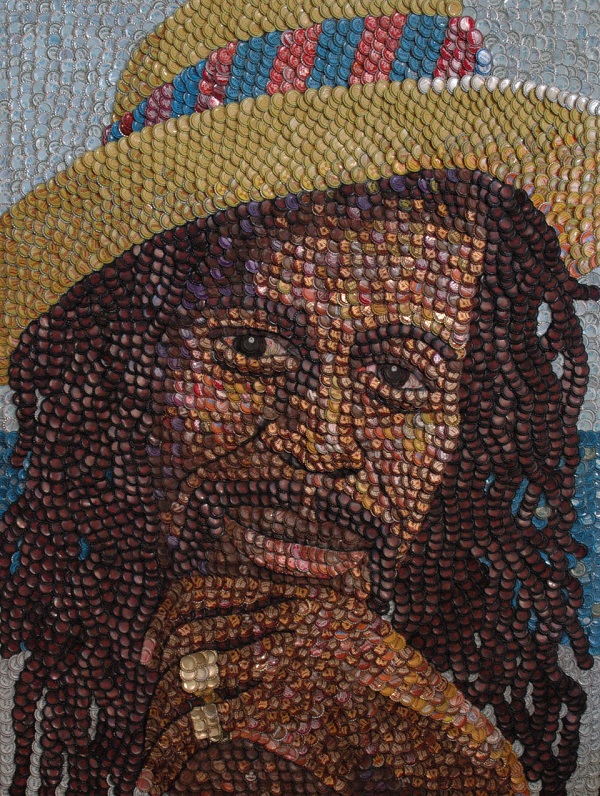
Gregory Isaacs by artist Molly Right. Photo Credit: Molly Right.
GALO: How would you describe your aesthetic? Does the use of ready-made materials with pre-established colors and shapes ever present a design problem or clash with your aesthetic? Do you find yourself needing to alter the bottle caps in anyway so that they fit?
MR: Yes, there can be challenges working with the material. I alter them by hammering them flat so that they layer. Sometimes, I hammer an edge to flatten out an edge or shape it in some way.
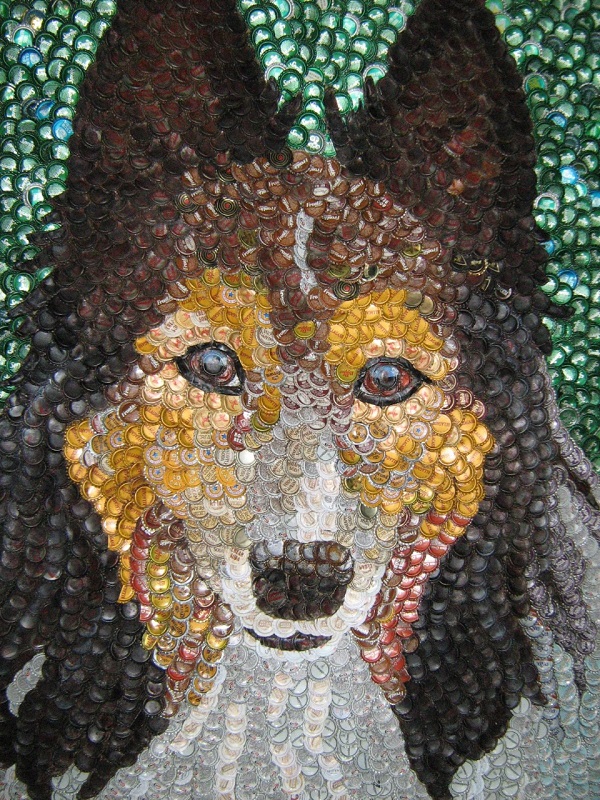
Bailey by artist Molly Right. Photo Credit: Molly Right.
GALO: What are you inspired by? Do these portraits come from things you are reading or events in the news that then stimulate your work? For example, did a current event change how you presented the portrait of Michelle Obama, or are these portraits more straightforward?
MR: I don’t think a current event would change how I make the portraits. Michelle Obama, I did her portrait because I’m a fan of her. I do three to four pieces per year that are not commissioned that I make for myself.
Sometimes, I’m influenced by something I’ve read. Often, people come to me and they want a portrait but they don’t know what they want. I will be inspired to recommend something with meaning. For example, I was just reading a book called the Frontiersmen, which is about the settling of the US. Now I’m doing a portrait of Sitting Bull for somebody who was interested in something like that but wasn’t sure exactly who they wanted. I had a list of Native Americans that I recommended because it interested me at the time.
Often, I want to portray a musician, so I throw out my ideas of things I’d like to see for people who are not sure what they want. It’s always such an individual thing. You want to feel like you relate to it in some way.
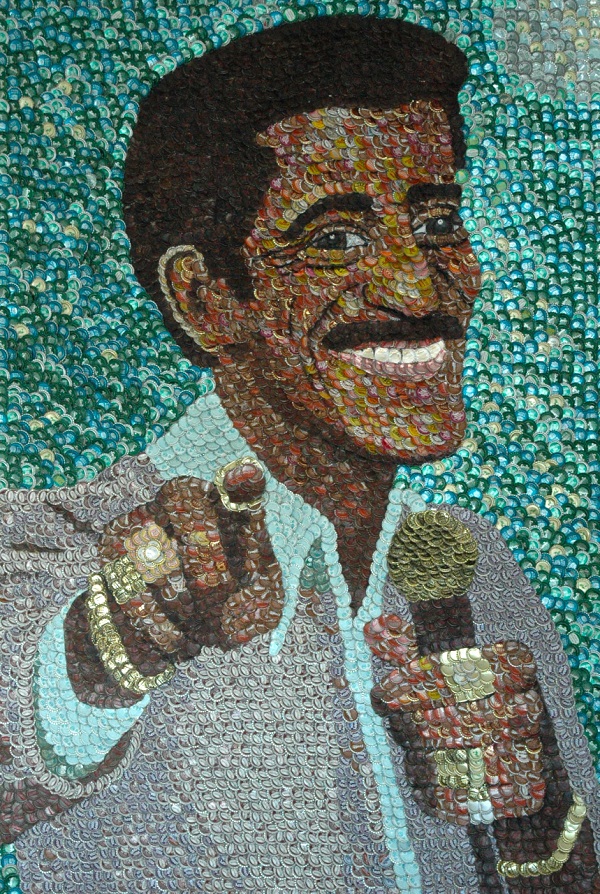
Sammy Davis Jr. by artist Molly Right. Photo Credit: Molly Right.
For more information about Molly Right’s artwork, please visit her Web site.


